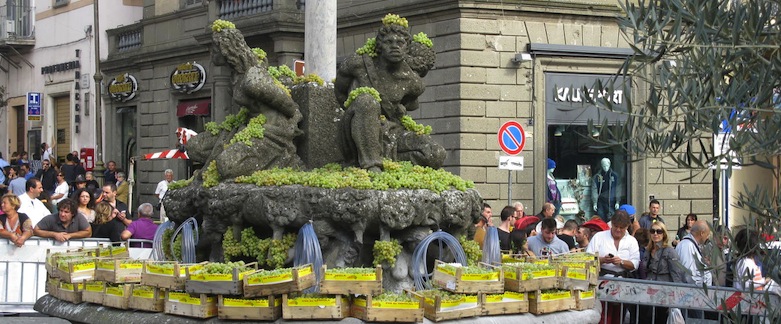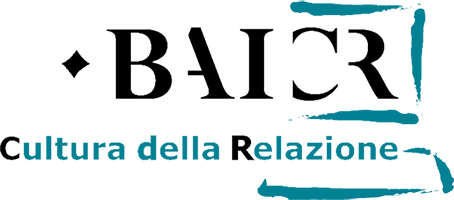Lazio’s gastronomic roots
un articolo a cura di Ernesto Di Renzo
Università di Roma Tor Vergata

The region of Lazio is a mosaic invented on paper between 1860 and the 1930s. The morphology, climate, and landscape of its territory is heterogeneous. Mountains alternate with plains, hills with coastal areas, valleys with lakes. Calcareous soils alternate with volcanic, woods with marshes, and maritime climates with continental.
The interaction of these varied features, together with demographic dynamics that have more than once remade the ethnic composition of the population, has been felt in the economic-productive sphere as well as the gastronomic, predisposing the guiding principles of development in a fragmentary and heterogeneous sense. With the exception of the Rome metropolitan area, Lazio has always had a markedly rural identity, one in which the authentic “genetic” matrices of its territory can be seen in its agriculture and stock raising.
Up to the end of World War II, agriculture, true backbone of the regional economy, was practiced in a regime of substantial autarky, especially in the mountainous interior. The local communities grew grains, fruits and vegetables, vines and olives, followed, under Arab influence and the discovery of the New World, by corn (maize), legumes, and tomatoes. The local biodiversity subsequently expanded to include a number of autochthonous foods that can be considered typical of certain localities. The list includes the green beans of Arsoli, the chickling vetch of Campodimele, the chestnut of Vallerano, the “pizzutella” (“pointed”) grape of Tivoli, the broccoli rabe of Anguillara, the wild strawberry of Nemi, and the artichoke and romaine lettuce of Rome.
Ever since antiquity, stock raising has symbolized Lazio, and is still an important source of income for the region, though it employs many fewer people than formerly. Animal-related activities provide the inhabitants of Lazio with essential sources of nourishment, which the local cuisines have turned into a multiplicity of dishes—for example, Roman milk-fed lamb or abbuoti, flavorful rolls of lamb intestine made in Ciociaria containing lamb innards, onion, parsley, and pecorino.
In the region today, such so-called “typical” products are at the center of a renewed collective interest after a long process of cultural removal, which began with the post-World War II boom years and which depopulated the rural world, created massive urban sprawl, introduced food-preservation methods that could ensure supply far from the time and place of production, and gave women access to the workplace. Naturally there were consequences for food preparation.
The combination of these factors sparked the irreversible decline of peasant-pastoral culture, with its precarious existence and limited resources, and transformed traditional gastronomy, bringing an abrupt halt to the transmission of culinary knowhow. A corollary has been the disappearance of centuries-old food ways and the establishment of new ones. The gradual acceptance of the new ways has increasingly restricted the space afforded to local flavors, considered synonymous with an archaic world from which it was felt necessary to take as great a distance as possible. It evoked poverty and could not guarantee modernity.
In the last two decades, as often happens when deculturation is excessive, the need not to lose oneself, or to return to being oneself, has activated a growing movement of identity revival. A similar operation has given place to the rediscovery of foods, recipes, and eating habits “as in the old days”: for example, the widespread phenomenon of gourmet shops, agriturismo, farmers markets, or peasant lunches. Thus in Lazio, as in the rest of the western world, genuine, authentic, typical, and home-style have gradually become the features of a style of eating that is healthful and consistent with traditional values, as well as of the found- again balance between man and the environment.
This pastoral and agricultural heritage is an inextricable part of Rome itself as well. Albeit residence of kings, emperors, and popes, seat of government and its bureaucracy, the capital’s genetic imprinting has ensured that the peasant soul of Rome coexisted with its urban dimension. Rome has always contained gardens, meadows, and places for food storage. Even the place names from the historic center to the periphery, echo the themes of rural life. Such street names as Via dei Fienaroli (hay sellers), Via dei Caprettari (goat sellers), Via dei Fienili (haylofts), Via degli Orti (vegetable gardens) di Trastevere, Via del Frantoio (oil press), or Via dell’Aratro (plow) are not chosen arbitrarily by the ruling class but capture true aspects of the agro-pastoral sphere existing within the city.
But the reason why Rome can still be considered the most “peasant” of European capitals is something else. There are agrarian estates even inside the roads that ring the city. Sheep still graze along the urban stretch of the Aniene River and the Via Appia Antica. Green spaces have everywhere insinuated themselves into the city fabric, even right up to the arches of the Colosseum. Numerous small neighborhood markets still survive, their vegetable stalls often managed by farm women from the Agro Romano. Thanks to their presence, such dishes as carciofi alla giudìa, cacio e pepe, aliciotti all’indivia, coda alla vaccinara, and pajata still constitute the “markers” of a kitchen that is simple but well able to express intense and original tastes.
Traditional Roman, romanesca, gastronomy in fact represents a puzzle characterized by its creativity and its heterogeneity, in which the products of the countryside coexist with the specialties of the forests, the fish caught in the rivers with the cheeses of the pastures; the typical products of the coastal Maremma with the dishes of the urban Jewish tradition. The latter is a tradition that contains that arithmetical paradox known as the “quinto quarto,” the “fifth quarter,” which comprises everything edible that remains after the animal has been quartered and the more prized cuts removed. From this offal (tripe, heart, liver, spleen, thymus gland, brains, tongue, tail) cucina romanesca has managed to derived flavorful dishes to offer to gourmet palates form the world over in the trattorias of Testaccio, Trastevere, and San Lorenzo.
But studying cucina romanesca does not mean only taking account of its innumerable horizontal layers created by the contributions of its surrounding area. We must also consider its age-old history over the course of which the varieties of food products and recipes have been handed down to us both by oral tradition and in writing. The latter, an extensive literature, includes the names of Horace, Cicero, Columella, Apicius, Juvenal, Martial, and Petronius. They tell us of an extraordinarily imaginative gastronomic culture that distinguished everyday meals from festive banquets; the tables of the rich from those of the poor; the emperors’ menu from the parvae cenulae of the citizens. It is also possible to outline a picture of a diet in which the range of the courses alternated from antipasti to soups and from roasts to vegetables, without disdaining snails, cabbages, fava beans, chicory, and borage. Some combinations of ingredients survive to our own day, such as olives spiced with chile or fennel or anise seeds; or the custom in the “fiaschetterie” (wine shops) of eating hard- boiled eggs with Frascati wine; or the persistence with which the padellotto (mixed offal), arzilla (skate), animelle (sweetbreads), or trippa (tripe) are cooked along the lines of dishes described in the pages of De re coquinaria, the Satyricon, De re rustica, or the nineteenth- century Sonetti of Gioacchino Belli. Think, finally, of all the cheeses, such as caciofiore, marzolino, caciotta, or pecorino, that grace the tables of the Capital every day.
Of this gastronomic universe that embraces in a single, organic reconstruction of Rome and its region, past and present, the tables of popes and common people, the work of Oretta Zanini De Vita constitutes an important and complete account.
NOTE
1 In O. Zanini De Vita, Popes Peasants and Sheppards. Recipes and Lore from Rome and Lazio, Berkeley, California University Press, 2012

